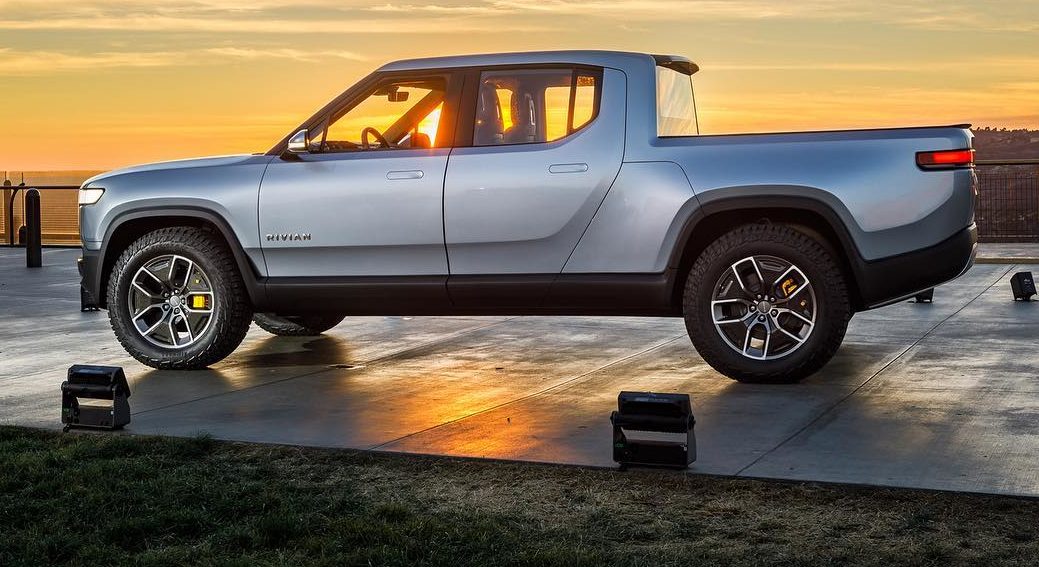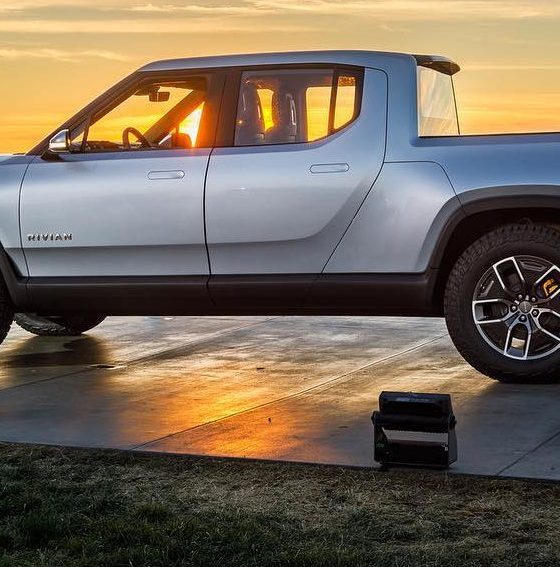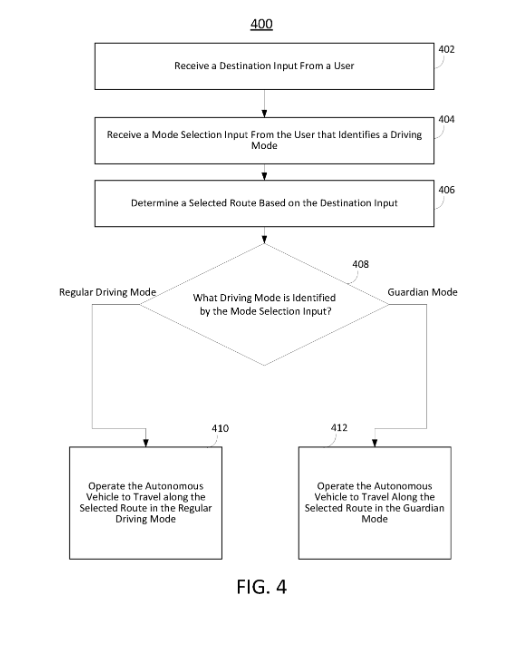

News
Rivian's new 'Guardian Mode' will safely move passengers without any driver present
A new patent submitted by electric car maker Rivian aims to create a safe traveling experience without anyone actually operating the vehicle. This would allow the vehicle to transport individuals who are not fully-competent to operate a vehicle to a destination without having a driver present.
Rivian named the patent “Systems and Methods for Operating an Autonomous Vehicle in a Guardian Mode,” and filed it to the United States Patent Office on June 11, 2019. The patent would create a new mode that could allow a physical driver to not actually be present for the duration of a trip. It would instead give the vehicle’s owner the option to request a ride for someone who is not capable of legally or safely operating the vehicle, like a child or a senior citizen. The company calls this capability “Guardian Mode.”
Using examples like a child needing a ride home from school, Rivian mentions that the development of autonomous vehicles are allowing for safe travel without someone having to be in direct control of the vehicle. However, there is the possibility for someone who is not fully competent to still control the car and make use of the vehicle’s autonomous features to travel, even if they are not legally able to.
Rivian explains this point further in the following section:
“Modem autonomous vehicle technology allows an autonomous vehicle to transport passengers between destinations without being directly controlled by a human driver. Consequently, it is now possible for an autonomous vehicle to transport a user who is not fully competent (e.g., a child user, a senior citizen user, or a mentally challenged user) without a fully competent user being present. However, in such a situation, a user who is not fully competent may misuse the capabilities of the autonomous vehicle while in transit. Such misuse may lead to undesirable situations (e.g., a child requesting to go to a wrong location), or even dangerous situations (e.g., a child opening a door while the car is still in motion, or a child unbuckling a seat belt). Consequently, what is needed is an autonomous vehicle with a mode of operation that is appropriate for transporting users who are not fully competent.”
The new “Guardian Mode” would be activated by initially having a user request a destination for their vehicle. Subsequently, the vehicle would ask the user if it would be operating in “Regular Driving Mode” with a driver present, or in “Guardian Mode” without someone directly operating the vehicle. The car would then decide upon a route of travel based on this selection.

“Guardian Mode” would give the person who is present some freedoms within the vehicle, like radio or music operation, climate control, opening or closing windows, or in some cases, request a destination change. All of these options would be enabled or disabled by the owner of the car. They would input a PIN or passcode that would activate or deactivate each of these settings. The patent also states that the vehicle would be in constant connection with a laptop or smartphone to allow for communication between the vehicle and the owner.
In October, Rivian submitted a different patent for a control system that would customize a user’s ability to control certain functions within the vehicle. This was an attempt to increase the safety of the company’s fully-autonomous platform because they recognized that not everyone should have access to some features of the vehicle.
In an attempt to create a safer road, Rivian’s several patents geared toward the development of fully-autonomous driving are a recognition that there are loopholes within the overall framework of the idea. While self-driving vehicles are new and exciting and safer than humans in many ways, there are certain functions that are open for user abuse. One incident of a child getting behind the wheel of an autonomous car could spell disaster for the entire industry and may set back autonomous traveling technology back several years. Before the world commits to a fully autonomous driving future, the industry’s leaders must confront the obvious issues. The submission of these patents is proof that Rivian is facing these challenges head-on.

News
Tesla is not sparing any expense in ensuring the Cybercab is safe
Images shared by the longtime watcher showed 16 Cybercab prototypes parked near Giga Texas’ dedicated crash test facility.

The Tesla Cybercab could very well be the safest taxi on the road when it is released and deployed for public use. This was, at least, hinted at by the intensive safety tests that Tesla seems to be putting the autonomous two-seater through at its Giga Texas crash test facility.
Intensive crash tests
As per recent images from longtime Giga Texas watcher and drone operator Joe Tegtmeyer, Tesla seems to be very busy crash testing Cybercab units. Images shared by the longtime watcher showed 16 Cybercab prototypes parked near Giga Texas’ dedicated crash test facility just before the holidays.
Tegtmeyer’s aerial photos showed the prototypes clustered outside the factory’s testing building. Some uncovered Cybercabs showed notable damage and one even had its airbags engaged. With Cybercab production expected to start in about 130 days, it appears that Tesla is very busy ensuring that its autonomous two-seater ends up becoming the safest taxi on public roads.
Prioritizing safety
With no human driver controls, the Cybercab demands exceptional active and passive safety systems to protect occupants in any scenario. Considering Tesla’s reputation, it is then understandable that the company seems to be sparing no expense in ensuring that the Cybercab is as safe as possible.
Tesla’s focus on safety was recently highlighted when the Cybertruck achieved a Top Safety Pick+ rating from the Insurance Institute for Highway Safety (IIHS). This was a notable victory for the Cybertruck as critics have long claimed that the vehicle will be one of, if not the, most unsafe truck on the road due to its appearance. The vehicle’s Top Safety Pick+ rating, if any, simply proved that Tesla never neglects to make its cars as safe as possible, and that definitely includes the Cybercab.
Elon Musk
Tesla’s Elon Musk gives timeframe for FSD’s release in UAE
Provided that Musk’s timeframe proves accurate, FSD would be able to start saturating the Middle East, starting with the UAE, next year.

Tesla CEO Elon Musk stated on Monday that Full Self-Driving (Supervised) could launch in the United Arab Emirates (UAE) as soon as January 2026.
Provided that Musk’s timeframe proves accurate, FSD would be able to start saturating the Middle East, starting with the UAE, next year.
Musk’s estimate
In a post on X, UAE-based political analyst Ahmed Sharif Al Amiri asked Musk when FSD would arrive in the country, quoting an earlier post where the CEO encouraged users to try out FSD for themselves. Musk responded directly to the analyst’s inquiry.
“Hopefully, next month,” Musk wrote. The exchange attracted a lot of attention, with numerous X users sharing their excitement at the idea of FSD being brought to a new country. FSD (Supervised), after all, would likely allow hands-off highway driving, urban navigation, and parking under driver oversight in traffic-heavy cities such as Dubai and Abu Dhabi.
Musk’s comments about FSD’s arrival in the UAE were posted following his visit to the Middle Eastern country. Over the weekend, images were shared online of Musk meeting with UAE Defense Minister, Deputy Prime Minister, and Dubai Crown Prince HH Sheikh Hamdan bin Mohammed. Musk also posted a supportive message about the country, posting “UAE rocks!” on X.
FSD recognition
FSD has been getting quite a lot of support from foreign media outlets. FSD (Supervised) earned high marks from Germany’s largest car magazine, Auto Bild, during a test in Berlin’s challenging urban environment. The demonstration highlighted the system’s ability to handle dense traffic, construction sites, pedestrian crossings, and narrow streets with smooth, confident decision-making.
Journalist Robin Hornig was particularly struck by FSD’s superior perception and tireless attention, stating: “Tesla FSD Supervised sees more than I do. It doesn’t get distracted and never gets tired. I like to think I’m a good driver, but I can’t match this system’s all-around vision. It’s at its best when both work together: my experience and the Tesla’s constant attention.” Only one intervention was needed when the system misread a route, showcasing its maturity while relying on vision-only sensors and over-the-air learning.
News
Tesla quietly flexes FSD’s reliability amid Waymo blackout in San Francisco
“Tesla Robotaxis were unaffected by the SF power outage,” Musk wrote in his post.

Tesla highlighted its Full Self-Driving (Supervised) system’s robustness this week by sharing dashcam footage of a vehicle in FSD navigating pitch-black San Francisco streets during the city’s widespread power outage.
While Waymo’s robotaxis stalled and caused traffic jams, Tesla’s vision-only approach kept operating seamlessly without remote intervention. Elon Musk amplified the clip, highlighting the contrast between the two systems.
Tesla FSD handles total darkness
The @Tesla_AI account posted a video from a Model Y operating on FSD during San Francisco’s blackout. As could be seen in the video, streetlights, traffic signals, and surrounding illumination were completely out, but the vehicle drove confidently and cautiously, just like a proficient human driver.
Musk reposted the clip, adding context to reports of Waymo vehicles struggling in the same conditions. “Tesla Robotaxis were unaffected by the SF power outage,” Musk wrote in his post.
Musk and the Tesla AI team’s posts highlight the idea that FSD operates a lot like any experienced human driver. Since the system does not rely on a variety of sensors and a complicated symphony of factors, vehicles could technically navigate challenging circumstances as they emerge. This definitely seemed to be the case in San Francisco.
Waymo’s blackout struggles
Waymo faced scrutiny after multiple self-driving Jaguar I-PACE taxis stopped functioning during the blackout, blocking lanes, causing traffic jams, and requiring manual retrieval. Videos shared during the power outage showed fleets of Waymo vehicles just stopping in the middle of the road, seemingly confused about what to do when the lights go out.
In a comment, Waymo stated that its vehicles treat nonfunctional signals as four-way stops, but “the sheer scale of the outage led to instances where vehicles remained stationary longer than usual to confirm the state of the affected intersections. This contributed to traffic friction during the height of the congestion.”
A company spokesperson also shared some thoughts about the incidents. “Yesterday’s power outage was a widespread event that caused gridlock across San Francisco, with non-functioning traffic signals and transit disruptions. While the failure of the utility infrastructure was significant, we are committed to ensuring our technology adjusts to traffic flow during such events,” the Waymo spokesperson stated, adding that it is “focused on rapidly integrating the lessons learned from this event, and are committed to earning and maintaining the trust of the communities we serve every day.”








